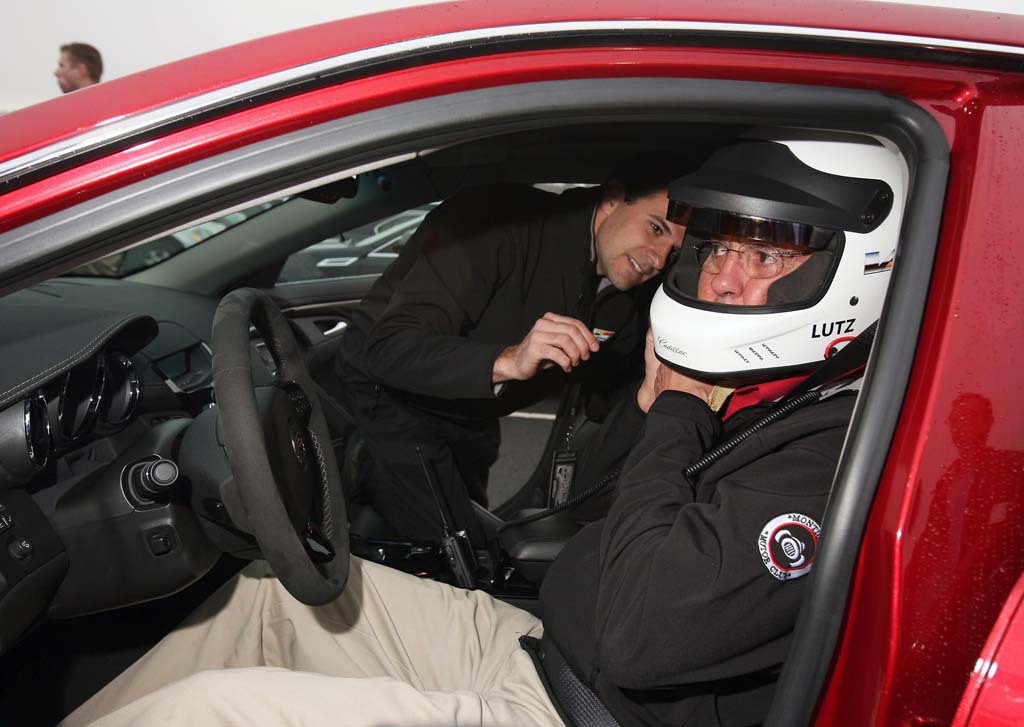
Will retirement end the 50-year career of "Maximum" Bob Lutz, or just serve as a starting point for new ventures?
Old soldiers don’t die. In some cases, they don’t even fade away.
Officially, Bob Lutz is about to retire, ending a nearly decade-long run with General Motors, and close to half a century in the auto industry. But as he demonstrated during a “farewell†interview with TheDetroitBureau.com, the 79-year-old former Marine pilot isn’t going out quietly. Indeed, one is left to wonder whether Lutz is going at all.
Certainly, the impact of his tenure as “car czar†will be felt for some time at General Motors. The dramatic restructuring of the automaker’s product development system has produced an array of hot-selling models at a company that had, when Lutz first arrived, in late 2001, become bloated, inefficient and content with mediocrity.
“Old (and) ossified,†is the way he describes the General Motors that was, rather rapidly, heading towards bankruptcy. It was a place where the head of styling had almost no say over the company’s designs, and where top management was convinced that cars could be designed and marketed the same way as toothpaste and shaving cream.


 “Hopeless,†and “really bad,†says Lutz, recalling the products that he found when he joined GM. “Every one of the cars that GM brought out for the first three years I was here…hopelessly failed.â€
“Hopeless,†and “really bad,†says Lutz, recalling the products that he found when he joined GM. “Every one of the cars that GM brought out for the first three years I was here…hopelessly failed.â€
Yet that didn’t seem to register, he recalls. If new products did poorly in consumer clinics, the company would just change the questions and tinker with the results.
“Excellence was forgotten,†Lutz laments, suggesting that the company’s product development system was being run by “people who didn’t have a clue trying to devise a system for creativity.â€
Skeptics will point out that Lutz was often out front hyping some of those early products, flawed models like the last-generation Pontiac Grand Prix, which he notably likened to the BMW 3-Series. But in the longer-term, the real test of his legacy will come from the changes the Swiss-born banker’s son was making behind the scenes – and the products that the new system is now rolling out.
One of Lutz’s most critical – and, at the time, most controversial – moves was consolidating GM’s far-flung operations into a single, global product development system. That approach has helped speed up the process of producing new vehicles while slashing costs.
The payoff can be measured in nameplates as much as the numbers – models like the new Chevrolet Malibu, Chevrolet Equinox, Cadillac SRX and, in Europe, the latest-generation Opel Astra.
“Product is the royalty, in our business, and design is the king,†the surprisingly youthful Lutz says, adding that, “everything else pales into insignificance.â€
Well, not entirely. As GM discovered, in late 2008, it was rapidly running out of money, and even an initial, multi-billion dollar loan from Washington wasn’t enough to keep it afloat. But the bankruptcy courts helped clear away billions of dollars in debt and legacy costs, and with the cooperation of its unions, the giant automaker’s cost structure is now on a par with even its toughest rivals, like Toyota.
The latest GM earnings numbers, released earlier this month, show that the situation is still dire but moving in the right direction. The final quarter of 2009 brought $4 billion in losses, though all but $600 million of that came from one-time write-downs. Despite the worst U.S. auto market in decades, GM seems to be moving back into the black, and even the company’s harshest critics agree the new generation of products is a key factor.
Yet, even now, it’s not always an easy sell in a company where the “bean-counters†often have the final word.
For his part, Lutz says, “I’m greatly in favor of removing cost where it doesn’t add any value for the customer.â€Â He points to one old SUV model that had embroidery stitched into its roll-up cargo cover as a place where it made sense to make a cut. But there are other places where a small amount of additional spending can yield a big payoff.
He points to the new Chevy Equinox, where GM spent a bit more than the accounting department liked. But the result, he proudly points out, is that not only are sales up on the new model, but customers are spending, on average, about $6,000 more per vehicle.
That, Lutz hopes, will be his legacy. And indeed, if GM really can turn itself around, it will be difficult to deny his role in its revival.
At 79, it’s probably no surprise that Lutz is leaving. Yet one only has to watch him in action, whether walking through a design studio or giving a speech at the opening session of the recent Los Angeles Motor Show, to realize that numbers lie. There are certainly more lines in a face bronzed by two weeks in the Caribbean, but the posture is still ramrod straight and the mind sharp.
Indeed, following that speech in California, last December, Lutz proclaimed his willingness to keep working at GM “as long as the board will have me.â€Â What happened since then is uncertain, but it appears he didn’t quite fit into the plans laid out by GM’s new CEO – himself well past retirement age – Ed Whitacre.
Since joining General Motors, last July, after its emergence from bankruptcy, Whitacre has replaced virtually every single senior manager at the company. But when it comes to the product development system as envisioned by Lutz, well, that’s gone untouched.
Whitacre, says Lutz, has recognized, “why bother with average.â€Â That, stresses Lutz, is how the old GM failed. “The old, ossified General Motors culture is really dead,†he concludes.
So, what next? Bob Lutz certainly has a lot to keep himself occupied, including an enviable car collection, a pair of his own fighter jets and a couple helicopters. He has homes and friends around the world. And he has another book project, a sequel to the well-reviewed “Guts,†which laid out his underlying business philosophy that it takes gut instinct, rather than endless analytics to make a company successful.
Wrapping up a 90-minute interview, the man known to many as “Maximum Bob” admits he’s not willing to work quite as hard as he has for the last 50 years. But there’s a wistfulness to the comment. One has to remember that his father worked in the bank until four months before his death – at the age of 94.
When it comes to this old soldier, it seems, Bob Lutz is in no rush to die, nor fade away.
